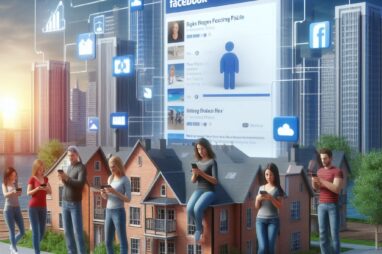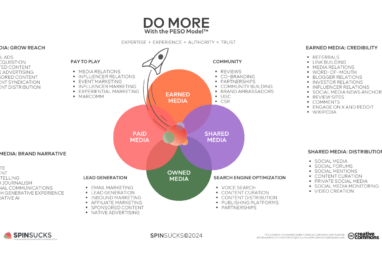Rise of the Infodemic
Is social media the more dangerous virus to have spread in 2020?
About the author
Carly Ratcliffe prepared this article as part of a CIPR Professional Diploma assignment while studying with PR Academy.
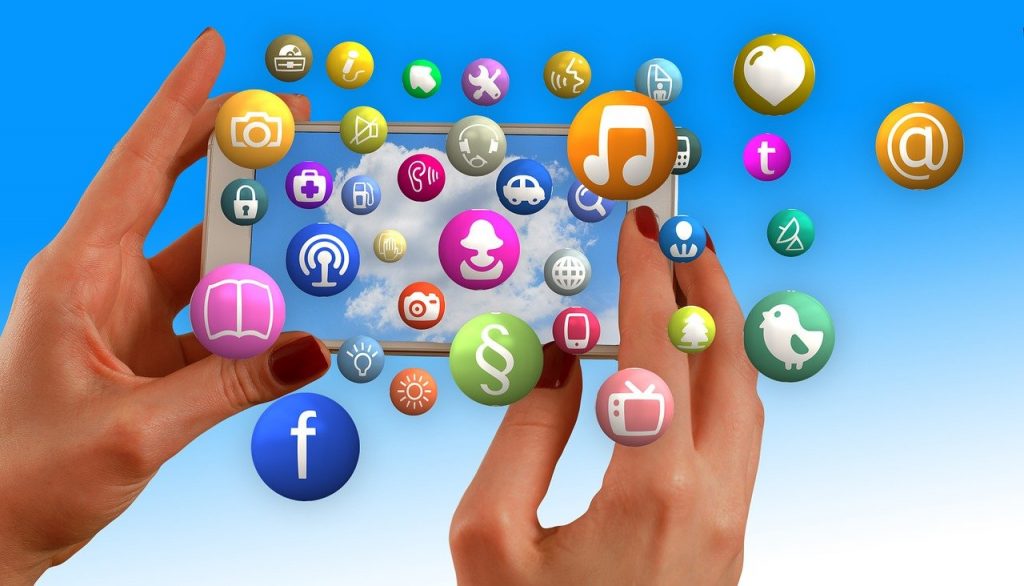
Infodemic (noun): a blend of “information” and “epidemic” that typically refers to a rapid and far-reaching spread of both accurate and inaccurate information about something, such as a disease.

The word was first coined during the 2003 SARS outbreak and has resurfaced this year in response to communications around Coronavirus. In February 2020 the WHO’s Director-General, Tedros Adhanom Ghebreyesus, said: “We’re not just fighting an epidemic, we’re fighting an infodemic. Fake news spreads faster and more easily than this virus and is just as dangerous.”
He was right in that social media is one of (if not the) fastest ways to deliver important information to the general public. It costs nothing and content isn’t regulated by the platforms before being posted, allowing news sources and brands to share whatever they like at the click of a button. It can be a communication professional’s dream, however with every pro comes a con and the Mark Zuckerbergs of the world have been fighting against a huge problem in the social sphere for some time now, in the form of fake news.
This confirms the power that social media beholds but used in the wrong way and for the wrong reasons, the results can be devastating. So has it been leveraged as a useful communication tool in the height of a global health crisis, or has it just made an impossible situation worse? As a PR & Social Media Manager myself, I sit firmly in the middle. Let’s discuss why.
Social media fatigue and cognitive load theory
A Socialbakers report found that due to lockdown and a new working from home culture, Facebook page fans were spending more time online with activity increasing as much as 16.1% between January and March 2020.
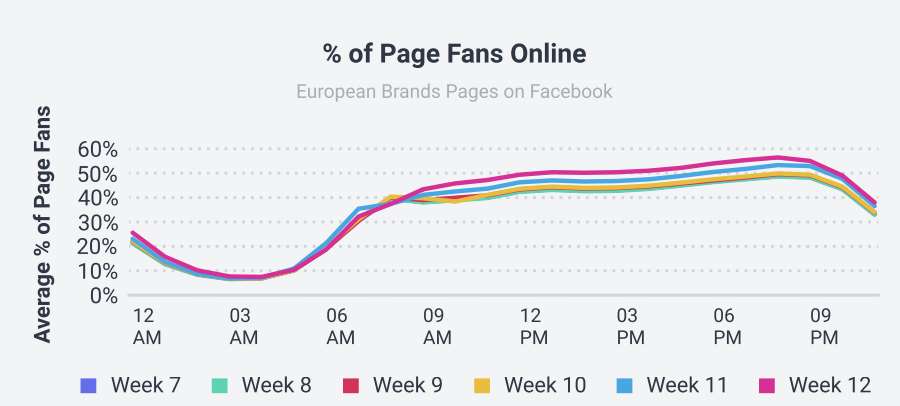
Figure 1: Chart Time Range: January 1, 2020 – March 23, 2020; Sample: 6,529 European Facebook Pages of Brands; Source: Socialbakers data
Brands and news sources capitalised on the opportunity, quickly changing their online strategies to produce Covid-19 related content for Facebook and Instagram. The same report found that Facebook was by far the most popular platform of choice by brands to reach audiences hungry for Coronavirus news, whilst Instagram was favoured as the platform for promoting products and activities to entertain us during lockdown (cue an onslaught of banana bread tutorials and a landslide of IG live at-home workouts).
To date, the biggest single-day spikes in posts came on March 16, with more than 11,000 Facebook posts and 3,300 Instagram posts related to the pandemic, accompanied with the most commonly used hashtags #coronavirus, #covid19 and #covid_19.
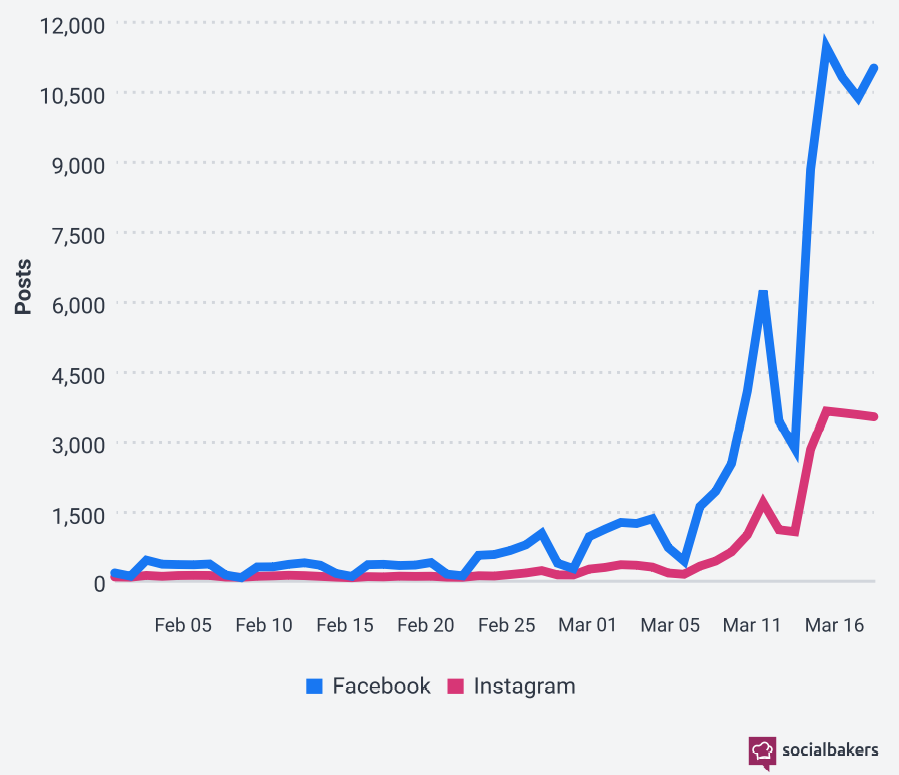
Figure 2: Chart Time Range: February 01, 2020 – March 20, 2020; Sample: 38,933 Facebook Pages & 12,905 Instagram Profiles of brands that have written about Coronavirus; Source: Socialbakers data
However, despite an increase of online activity, it appears that most countries in Europe, North America and the Middle East experienced a decline in social engagements as cases continued to rise. Socialbakers compared March 1-March 26 2020 to the same period in 2019 and found the UK saw a decrease of 10.5% in Instagram engagements, whilst Sweden saw a decrease of 15% in Facebook interactions.
It is, however, perhaps unfair to compare countries like-for-like, as engagements should surely be judged on what the current situation is in that particular country at that particular time. More news coverage = more noise.
Regardless of the reasons for the nosedive in engagements though, we can assume that the switch off in the hardest hit countries lends to the theory of ‘social media fatigue’, which is defined by a report via Science Direct as “persistent impulses to back away from social media due to information and communication overload”. They linked an increase of the sharing of unverified information, combined with a decrease of entertaining content, to social media burnout.
Similarly, ‘cognitive load theory’ is a concept in which the “limited capacity of our human working memory may be overloaded if presented with too much information”, as according to the Science Direct report. 2020 has been a constant flow of negative news – from the pandemic to the death of George Floyd – so it’s little wonder that the public have temporarily switched off.
As a PR & Social Media Manager of multiple brands, I’ve witnessed first-hand the surge in online usage across all accounts as boredom, anxiety or curiosity drove users online, paired with the later decline in followership and engagement as audiences decided to take a digital step back.
In June, our biggest account saw a decrease of 56% in Facebook engagement, my experiential learning of which was caused by both social media fatigue and lifted lockdown restrictions allowing us to venture back into the real world and away from our screens.
PR professionals are no strangers to absorbing a huge amount of new information on a regular basis, however even the most head strong of us would struggle with the constant changing dialect of the same difficult topic. It is vital therefore that communications teams pivot their messaging to align with the backdrop of Covid-19 to ensure that brands are delivering valuable, relevant and authentic content that cuts through the noise of a saturated space, providing solutions or answers to the
needs of their audience members.
‘Doomscrolling’, distrust and a digital dilemma
For many, Netflix has been a cherished source of entertainment during the pandemic, with one particular docu-drama making waves across – quite ironically – social media. The Social Dilemma sees ex-executives from tech giants such as Facebook, Google and Instagram step forward from the shadows of Silicon Valley to reveal secrets of how the platforms’ algorithms use your data to create a psychological profile of you, coercing you further into digital addiction.
The documentary’s release was rightly or wrongly cleverly timed with the pandemic, with both social media usage and the general population’s emotive state at an all-time high. “We’re training and conditioning a whole new generation of people that when we are uncomfortable or lonely or uncertain or afraid, we have a digital pacifier for ourselves” says Tristan Harris, former design ethicist of Google, which is a chillingly accurate reflection of how vulnerable the online community have felt this year.
It certainly seems that The Social Dilemma has ruffled a few Facebook feathers, provoking a statement from the company following reports that many users considered deleting their accounts after watching the show. The statement argued many points for what the show had got wrong, firstly dismissing the accusation that the platform builds its products to be addictive, with Facebook arguing that “instead we want to make sure we offer value to people, not just drive usage.” Well,
Facebook, you are a platform that depends solely on the engagement of your users, so in order to facilitate that, you have a need to ensure that they are returning repeatedly. There is therefore, an element of ‘capturing’ and ‘persuading’ your audience, so they feel inclined to return later.
On the subject of algorithms and how the documentary referred to them as ‘mad’, the tech company fights back, stating that “we use them to show content that’s more relevant to what people are interested in, whether it’s posts from friends or ads.” To any social media manager, and even a seasoned social media user, this will not come as new information. This is however perhaps a double edged sword, as although Facebook are transparent about the fact they use algorithms to deliver personally tailored content, they remain tight-lipped about how the algorithm works.
Facebook has never revealed exactly how the code decides which content is delivered to your news feed, but according to ex-Facebook Operations Manager, Sandy Parakilas, it’s because even the platform designers don’t know, shockingly revealing in the documentary: “There’s only a handful of people at these companies who understand how these [algorithm] systems work, and even they don’t necessarily fully understand what’s going to happen with a particular piece of content. Because they’re controlling the information that we see, they’re controlling us more than we’re controlling them.”
So if the developers can’t regulate the content that is posted to our feeds, can users really trust that they have the issue of fake news under control – particularly at such a sensitive time – or that their data is being used as they say it is?
Ever since the Cambridge Analytica scandal in 2018, the largest ever breach of Facebook data in history, users have become increasingly wary of how their online data is being used. Despite Facebook fighting back by claiming they have “created new safeguards for how data is used and given people new controls on how to manage their data”, the documentary’s revelations rocked the proverbial boat, with many turning to Twitter to air their opinion.
After watching #socialdilemma on netflix… pic.twitter.com/kT0oor1C0t
— Naveen Khabra (@navkhabra) September 14, 2020
I just watched the social dilemma
I feel like an idiot getting twitter— Rohit Khadilkar (@JusAnotherRohit) September 14, 2020
These posts perhaps serve as an echo chamber of the mounting distrust that the public seems to have in social media. A report by Global Web Index found that although 47% of the global population are keeping up-to date of the pandemic via social media, only 14% consider it a viable news source. This must be a hard pill to swallow for Zuckerberg and his team, who have thousands of workers dedicated to making the platform deemed more trustworthy.
This finding does however raise the question of if social media users don’t trust the platforms to provide them with the most accurate information of the Coronavirus pandemic, why are they using it as a news source in the first place?
‘Doomscrolling’ is another term to have been given sufficient air time in 2020, which refers to the compulsion to keep reading bad news online. This plays into the documentary’s criticism of social media’s addictive tendencies and how the platforms feed off people’s anxieties and curiosity. However, despite Global Web Index’s finding, the same report found that the UK felt indifferently about how social media companies have handled communications around Covid-19, with 39% ‘neither approving or disapproving’ and only 9% ‘strongly disapproving’. This is an intriguing finding, given that the stats of the digital switch off are suggesting otherwise, so have we given social media platforms a bit of a hard time?
Perhaps unsurprisingly, given that Gen Z and Millennials have grown up in the digital age, globally 26% of Gen Z ‘strongly approved’ that social media companies have acted responsibly, whilst only 19% of Gen X and 13% of baby boomers felt the same way. It seems that social media platforms have more work to do in winning over the older generations, who have greater trust in government websites and official news sources, according to the report.
Figure 3: https://thetab.com/uk/2020/09/16/the-social-dilemma-memes-netflix-175160
So… fake it ‘til you make it? Maybe not in a pandemic
The pre-empted rise in social media usage around the pandemic encouraged the work between the WHO and search and media platforms such as Google, Facebook, Instagram and TikTok to counter the spread of fake news. Lessons were learnt from the SARS conspiracy theory in 2003, in which Chinese internet discussion boards and chat rooms were inundated with rumours that the virus could be a biological weapon manufactured by the United States, that fake news spreads fast.
In the last ten years, social media platforms raced to put measures in place to curtail the spread of misinformation of the Ebola epidemic and the Swine Flu pandemic, however it was evident that some of the most unreliable sources still had the loudest voices, leading to a further distrust. As a result, Facebook have since taken big steps in the Covid-19 pandemic by introducing the Coronavirus Information Centre to their platform, which serves as an anchor of WHO and government-approved news, however the tech giant have admitted themselves that their systems “aren’t perfect and there are things that we miss” but that they are working hard to remove misinformation around Covid-19.
Admittedly, it would be virtually impossible for social media platforms to trawl every piece of pandemic-related news and each would probably require manual approving, which would take away from the platform’s purpose and ability to instantaneously update its audience. It’s therefore an incredibly difficult tightrope to walk, with the balance too easy to tip in the wrong direction.
We maybe should take more responsibility in who we choose to follow on social media, what we read and what we choose to believe – common sense is, at the end of the day, something that cannot be taught. On the other hand, social media platforms could go a step further in tightening control over their algorithms to reassure users that content has been properly regulated and to instil a much-needed dose of confidence back into the platforms, particularly in the older generations at the height of a global crisis.

